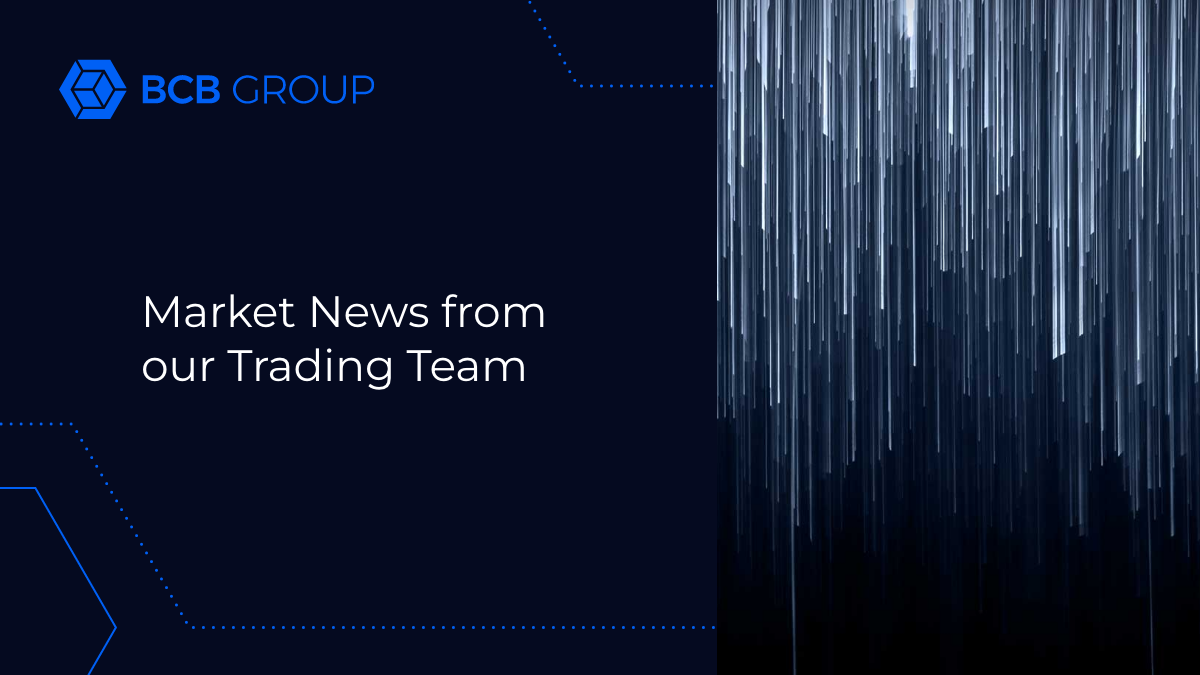
Partners you can bank on
Building bridges between the digital assets world and mainstream banks is key to the future of the digital economy.
Back in the early days of cryptocurrency the most fervent disciples of digital assets dreamt that this new financial tool would replace traditional financial institutions. But as the digital assets market has matured it has become clear that the digital and ‘tradfi’ worlds have more to gain by working together.
BCB Group’s strategy has been to build the links across the digital community and with the traditional financial system, and Claire Barratt, Head of Banking and Strategic Partnerships, is at the coal face of this endeavour.
“It is true that fintechs have completely disrupted the market, but it’s also really important to have those partnerships with banks. They are the ones that have direct access to local payment rails, and so through our banking partners, we can tap into that,” says Barratt.
“There are several players in the market who have been very successful in supporting the fintech space. These banks have been expanding globally, either through acquisition or by going through the application process to obtain the appropriate licences to achieve direct connectivity to local payment rails,” she adds.
Barratt is well placed to build bridges between digital asset markets and traditional banks having spent her early career in mainstream banking. She began her career at Commerzbank before joining Wells Fargo, where she focused on correspondent banking – the transaction side of the business – and gained her qualifications in compliance. This experience and skillset have proved invaluable in forging ties with the banking sector.
Confidence is key
Barratt’s move into the digital finance sector began when she was approached by Revolut and decided digital assets were the future. She later moved to stablecoin payments group Orbital where, as well as gaining more experience of the market, she found herself as a client of BCB. Watching BCB at work and expanding its business, she jumped at a chance to join the company when the opportunity arose.
“BCB Group has a great story to tell because it is regulation-first and heavy on compliance. Being able to articulate that to big banks is always well received,” says Barratt.
It is also well-received by BCB clients, says Andrew Bywater, Head of Enterprise Sales. “Clients want to know who we are working with, and it is really valuable to tell them we are working with high-calibre banking partners with good creditworthiness.” he says.
BCB does not advertise the names of all its banking partners but is happy to discuss such details with clients and potential clients.
Forging a global network of partnerships
BCB’s banking partnerships cover a range of business activities including treasury and safeguarding, trading and foreign exchange, and these relationships are key to BCB’s payment accounts and FX services in more than 20 fiat currencies.
Camille Tas, Head of Sales, says that it is from such beginnings in trading services that larger and deeper relationships develop.
“Once we are giving a banking partner FX business they can get to know us, our clients and our trading flows and they will then consider us for a larger relationship with payment accounts and other services,” she says. “It takes time to develop these relationships, but the confidence and trust that come with time are essential.”
One of the most crucial arrangements with banks, which deliver significant benefits to BCB’s customers, are connections to payment rails within local jurisdictions, because providing ‘the last mile’ in payments is what creates a truly international payments service.
Barratt explains: “Our customers are typically international and so they want cross-border payments. But what they are also often looking for is to be able to unlock new jurisdictions for their business. For example, our banking partnerships recently enabled us to launch local rails in Australian dollars with the two local payment systems. For our clients, that means they have an easier route to launching in Australia.”
Australia is just one example of accessing local payment rails. BCB has relationships in multiple markets and continues to expand, with prospects in the Middle East and Asia expected to come to fruition this year.
The holy grail, however, will be the US banking system. Barratt admits that “regulatory uncertainty” makes the US a hard nut to crack but she is optimistic: “I’m very excited for this year. It is very complex in the US, but I think we are seeing the first movers in bigger banks starting to look at this.”
BCB’s network of banking partnerships with tier one and two banks extends across Europe and Asia. Barratt is reluctant to give a precise number but says BCB has well over a dozen banking partnerships, making it one of the leaders in the digital assets market for building relationships with the mainstream banking sector.
It has also set itself ambitious targets. “Our aim is to be a touchpoint in one in three of all transactions linked to cryptocurrency,” says Barratt.
Resilience
The calibre of banking partners is the first step to a resilient payments system and BCB requires that its banking partners are part of their respective bank deposit insurance schemes – including the European Deposit Insurance Scheme (EDIS), the UK’s Financial Service Compensation Scheme (FSCS) and the Federal Deposit Insurance Corporation (FDIC) in the US.
But resilience is also about having multiple providers to ensure continuity of service in the event that one bank backs out of the market.
“My job is to build redundancy into our services in each currency and market,” says Barratt. “This is quite a volatile space, and banks’ appetites can change. So, if a bank says, ‘Actually we don’t want to bank crypto services anymore’, we’ve got alternatives and can just plug our clients back into another one of our partners.”
A watershed year ahead
Stablecoins are widely seen as a key bridge between the digital assets market and traditional banking, delivering the benefits of the blockchain to essentially fiat currency transactions (see our Stablecoin explainer on page 21).
Stablecoins’ potential is clear to both digital natives and mainstream finance and, as Barratt says, they are likely to be ‘the buzzwords of 2025’. The path ahead however is not entirely clear as the EU’s Markets in Crypto Assets (MiCA) regulation comes into effect over the coming 6-18 months.
Tether has said it will not be applying for USDT to be MiCA-compliant, meaning the best-known US dollar stablecoin will not be tradeable by MiCA-authorised operators in Europe. Barratt however believes stablecoins will still be a major force on this side of the Atlantic.
The integration of digital and traditional finance will also expand the market of potential clients beyond crypto native companies, Barratt argues, from smaller international businesses to global corporations.
“Those big corporates will be thinking about how they can leverage stablecoins for their treasury so we’re now looking at these crypto-adjacent clients,” she says.
Digital and tradfi – rivals and partners in the future economy
Relationships and partnerships between digital finance and mainstream banks are fast developing but they are complexity and nuance in those relationships too.
The potential for mutual gains from partnerships is clear, but at the same time payment service providers and banks are in competition. For the foreseeable future, however, Barratt sees the benefits of partnership as the dominant factor.
“I have really seen a shift in the last year,” says Barratt. “You see a lot of banks that want to go into the digital asset space but may not have the expertise. It is about giving them the ability to access digital assets by leveraging a partnership with an organisation such as BCB which has the experience and is doing it safely and with a regulatory-first approach.”







